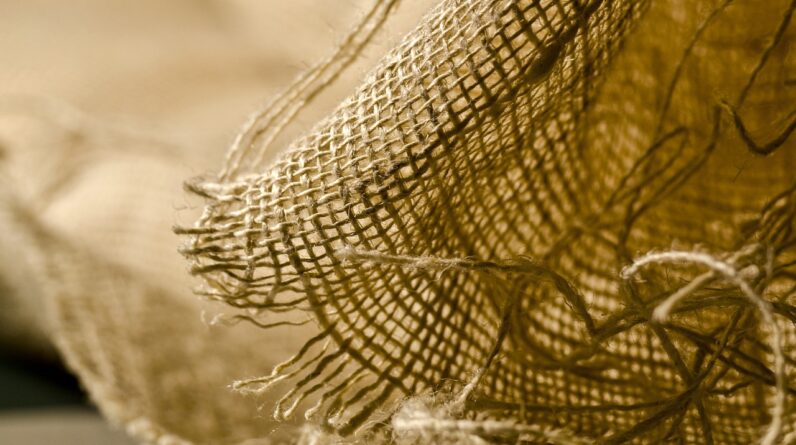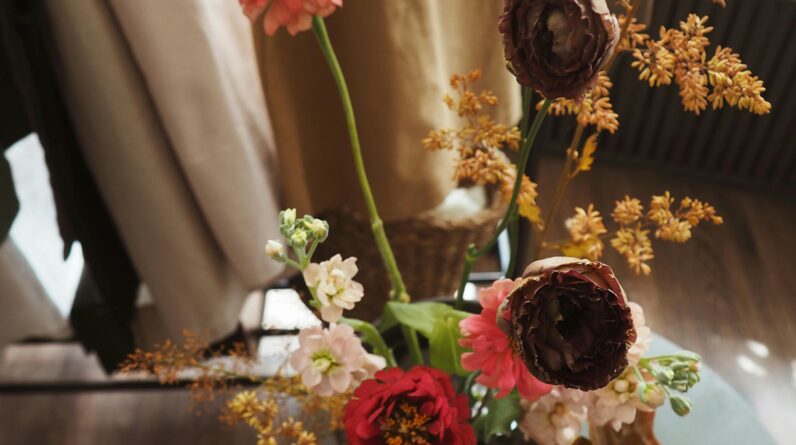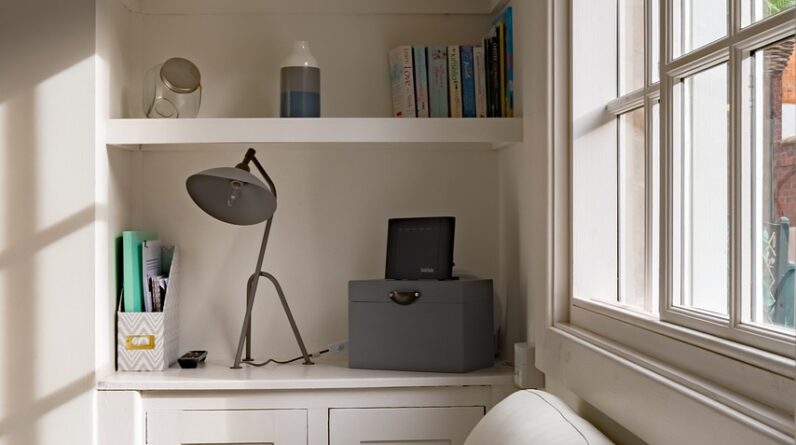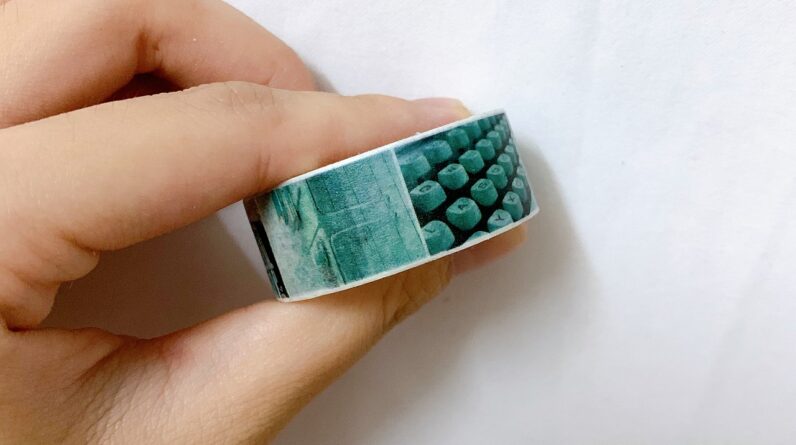
Hey there, fellow crafters! In our article “Crafting with Nature: Incorporating Natural Elements in Your Projects,” we dive into the wonderful world of nature-inspired crafting. We explore how twigs, leaves, stones, and other natural materials can elevate our creative projects, making them uniquely beautiful and environmentally friendly. By incorporating nature’s bounty into our handiwork, we not only celebrate the world around us but also add a touch of organic charm to our daily lives. Join us as we embark on this journey to blend artistry with the natural wonders that surround us.
Have you ever found yourself marveling at the beauty of the great outdoors and wondering how to bring that essence into your crafting projects? Welcome to the fascinating world of crafting with nature! In this article, we’ll delve deep into the ways you can incorporate natural elements into your projects, bringing new dimensions of beauty and sustainability to your work. Let’s get back to nature, shall we?
The Magic of Nature in Crafting
Nature has a unique way of inspiring us. The textures, colors, and patterns found in natural elements can add a touch of organic beauty and authenticity to our crafts. Using materials sourced from nature not only enriches the aesthetics of our projects but also promotes sustainability and a closer connection to our environment.
Why Choose Natural Elements?
Using natural elements in crafting offers a number of benefits. They are often more sustainable than synthetic materials and can be more affordable or even free. Additionally, natural elements provide a unique texture and appearance that can’t be replicated by factory-made items.
How to Source Natural Materials
The best part about using natural materials in your crafting is that they are all around us. Here are a few tips for ethically sourcing these materials:
- Collect Responsibly: Always gather in moderation to avoid disrupting local ecosystems.
- Use Fallen or Discarded Items: Instead of cutting branches or picking live flowers, look for what has naturally fallen or been discarded.
- Check Local Guidelines: Some areas may have restrictions on gathering natural materials, especially in protected parks and reserves, so make sure you’re following local guidelines.
Popular Natural Elements for Crafting
There’s an abundance of natural materials out there just waiting to be incorporated into your next project. Below, we’ve listed some popular options along with ideas on how you might use them in your crafting endeavors.
Wood and Twigs
Wood and twigs are incredibly versatile. From driftwood to small twigs, these materials can be used in various ways.
Uses for Wood and Twigs:
- Picture Frames: Create rustic frames by gluing small twigs around the border of a traditional frame.
- Wind Chimes: Drill small holes in pieces of wood and hang them using string to make a natural wind chime.
- Decorative Shelves: Stack and glue pieces of driftwood to make unique shelving.
Leaves and Flowers
Leaves and flowers can bring a burst of color and life into your projects. Whether dried or fresh, they add a delicate touch.
Uses for Leaves and Flowers:
- Pressed Flower Art: Press flowers and leaves, then use them to adorn cards or frames.
- DIY Potpourri: Mix dried petals with essential oils to create lovely natural potpourri.
- Leaf Stamping: Use leaves dipped in paint as stamps to create intricate designs on paper or fabric.
Stones and Shells
Stones and shells from beaches and rivers can be used to add a coastal vibe to your crafts.
Uses for Stones and Shells:
- Mosaic Art: Create beautiful mosaics by gluing small stones and shells onto a surface.
- Decorative Jars: Fill glass jars with layers of colored stones and shells for an eye-catching display.
- Rock Painting: Paint small stones with intricate designs or inspirational words.
Pinecones and Acorns
Pinecones and acorns are perfect for fall or winter-themed projects. They bring a rustic charm that is hard to beat.
Uses for Pinecones and Acorns:
- Holiday Decorations: Spray paint pinecones and acorns with metallic colors for festive holiday ornaments.
- Wreaths and Garlands: String acorns and pinecones together to create natural wreaths or garlands.
- Table Centerpieces: Place pinecones and acorns in a bowl for a simple yet elegant table decoration.

Crafting Techniques with Natural Elements
Incorporating natural elements into your crafting projects involves more than just collecting materials; it also requires some specific techniques to make the most of what nature provides.
Drying and Pressing
Drying and pressing are essential techniques for working with perishable natural materials like flowers and leaves.
How to Dry and Press:
- Drying Flowers: Hang flowers upside down in a well-ventilated area to preserve their shape and color.
- Pressing Leaves and Flowers: Place leaves or flowers between two sheets of paper and place them inside a heavy book for several weeks.
Sealing and Preserving
Natural materials can degrade over time, so it’s often wise to use sealants and preservatives.
Ways to Seal and Preserve:
- Wood Sealant: Use a natural wood sealant to protect twigs and wood.
- Mod Podge: Brush a coat of Mod Podge on leaves and shells to preserve their appearance.
- Silica Gel: For a more advanced drying technique, silica gel can help preserve the structure and color of flowers.
Combining Elements
Combining different types of natural elements can produce stunning results. Mixing textures and colors often brings a new level of complexity to your projects.
Ideas for Combining Elements:
- Mixed Media Art: Use a combination of rocks, wood, and dried flowers to create a piece of wall art.
- Nature Mobiles: Create a hanging mobile using twigs, leaves, and small stones.
Eco-Friendly and Sustainable Crafting Practices
One of the greatest advantages of crafting with nature is the eco-friendly aspect. But we must also be mindful not to harm the environment while sourcing these materials.
Low-Impact Sourcing
When gathering natural elements, it’s important to cause minimal impact on the environment. Here’s how we can practice low-impact sourcing:
- Foraging Smartly: Only collect small amounts and ensure you’re not depleting local resources.
- Sustainable Harvesting: If you have a garden, grow your own flowers and plants specifically for crafting.
- Recycling Natural Elements: Repurpose materials you’ve already used in another project.
Upcycling
Upcycling involves repurposing discarded materials to create something new. This eco-friendly practice can be applied to natural elements as well.
Examples of Upcycling:
- Driftwood Furniture: Transform driftwood pieces into small furniture items like stools or side tables.
- Pallet Gardens: Use old wooden pallets to create vertical gardens.
- Bottle Gardens: Turn glass bottles into planters filled with small rocks and soil.

Crafting Project Ideas with Natural Elements
Sometimes, all we need is a little inspiration to get started. Here, we’ve compiled a few project ideas to kickstart your creativity.
Nature Journals
Create a nature journal that includes pressed flowers, sketches of natural scenes, and notes about your findings.
Steps to Create:
- Collect Elements: Gather small flowers, leaves, and other flat materials.
- Prepare Journal: Select a blank journal with thick pages.
- Arrange and Press: Arrange the elements on the pages and press them using heavy books.
Nature-Inspired Jewelry
Craft beautiful, one-of-a-kind jewelry using natural elements such as wood, stones, and even seeds.
Steps to Create:
- Choose Your Materials: Gather small stones, polished wood pieces, and durable plant seeds.
- Drill Holes: Carefully drill small holes for threading.
- Assemble: Use natural twine, leather, or metal findings to assemble your unique pieces.
Home Decor Items
From centerpieces to wall art, natural elements can add a serene, organic touch to any home décor.
Project Ideas:
- Wall Art: Glue twigs and dried flowers onto a canvas to create a frame-ready art piece.
- Candles: Embed dried flowers and twigs inside homemade candles.
- Natural Coasters: Use slices of tree branches as rustic coasters.
Children’s Craft Projects
Nature crafting isn’t just for adults—it’s a wonderful way for children to connect with the environment and unleash their creativity.
Kid-Friendly Crafts:
- Nature Collages: Have children glue leaves, small sticks, and petals onto a piece of cardboard to create a nature collage.
- Rock Animals: Paint rocks to resemble animals and use other elements for features (e.g. twigs for legs).
- Leaf Rubbings: Place leaves under a sheet of paper and rub crayons over them to create leaf rubbings.
Crafting with Nature Year-Round
When we think about crafting with natural elements, we often imagine it as a seasonal activity. However, with a bit of creativity, we can incorporate nature into our projects all year long.
Spring
Spring offers blooming flowers, fresh leaves, and vibrant colors. It’s the perfect season for creating botanical prints and floral arrangements.
Spring Project Ideas:
- Flower Crowns: Make flower crowns using fresh blooms and leaves.
- Eggshell Planters: Use eggshells as mini planters for succulents.
Summer
Summer brings a wealth of lush greenery, bright flowers, and seashore treasures.
Summer Project Ideas:
- Shell Necklaces: Create necklaces using shells collected from the beach.
- Leaf Print Tote Bags: Paint leaves and press them onto a fabric tote bag to create designs.
Autumn
Autumn is all about rich colors, fallen leaves, acorns, and pinecones.
Autumn Project Ideas:
- Acorn Jewelry: Make necklaces and bracelets using polished acorns.
- Pinecone Garlands: String together pinecones for a festive garland.
Winter
In winter, the natural world might seem a little more barren, but there are still plenty of crafting opportunities with pinecones, evergreen branches, and dried items.
Winter Project Ideas:
- Evergreen Wreaths: Create wreaths with evergreen branches, pinecones, and berries.
- Snowflake Decorations: Collect twigs and form them into snowflake shapes for winter decorations.

Conclusion
Crafting with nature opens up a world of creativity and sustainability. By incorporating natural elements into our projects, we connect more deeply with the environment and create beautiful, one-of-a-kind items that reflect the natural world’s intrinsic beauty. We hope this guide has inspired you to look at the natural materials around you in a new light and to start incorporating them into your own crafting projects. So, let’s get out there, gather some elements, and start creating something beautiful. Happy crafting!







